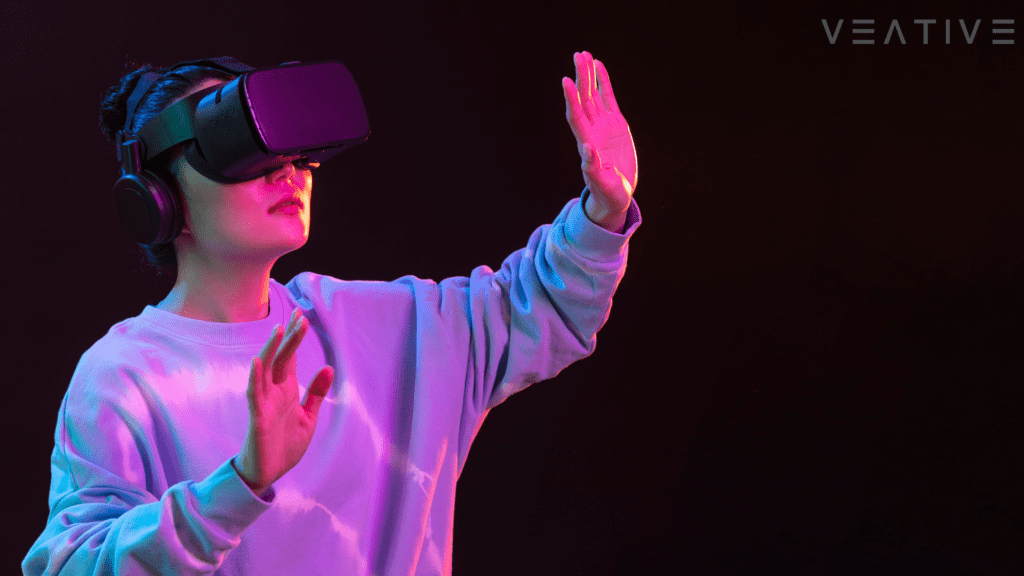
How adopting Immersive Learning can have a positive effect on Education

Education is the cornerstone of society, shaping the minds of the future. As technology advances, virtual reality in education has emerged as a groundbreaking approach that revolutionizes traditional education methods. By harnessing the power of virtual reality (VR) and augmented reality (AR), immersive learning creates transformative educational experiences that engage students on a whole new level. This article delves into the positive effects of adopting immersive learning in education and how it unlocks a world of possibilities for students and educators alike.
What is immersive learning?
Immersive learning is an innovative approach that takes education to new heights by creating captivating and interactive experiences. It is a catalyst for growth and enlightenment. It transcends the boundaries of traditional education, enabling students to spread their wings, explore new horizons, and achieve their full potential. By embracing the transformative power of immersive learning, we witness the birth of enlightened minds ready to soar to new heights of knowledge, creativity, and understanding.
By leveraging virtual reality (VR) and augmented reality (AR), immersive learning allows students to step into virtual worlds, explore realistic simulations, and engage with educational content in a multi-sensory manner. It transforms passive learning into active participation, making subjects come alive and deepening understanding. Through experiential learning, personalization, and collaborative opportunities, immersive learning empowers students to become active learners, fostering curiosity, empathy, and a love for lifelong learning.
Benefits of adopting virtual reality in education
By implementing virtual reality in education, students can be able to shed the confines of passive observation and emerge as active participants. They can step into a virtual cocoon where the boundaries between the real and virtual worlds blur. The advantages of immersive VR are as follows-
Captivating Engagement
Learning Comes to Life Immersive learning captivates students’ attention like never before. Through VR and AR, abstract concepts transform into interactive experiences. Imagine exploring the mysteries of ancient civilizations firsthand, diving into the ocean’s depths, or dissecting virtual organisms. Immersive learning places students at the center of the action, sparking curiosity and deepening their understanding of complex subjects. Its heightened engagement factor drives motivation, fosters a love for learning, and empowers students to take an active role in their education.
Experiential Learning
Learning by Doing Immersive learning enables experiential learning, where students actively participate and engage with the learning material. Instead of reading about historical events, they can step into a virtual time machine and witness history unfold before their eyes. Science concepts become tangible as students conduct virtual experiments and observe real-time outcomes. By experiencing education firsthand, students develop critical thinking skills, problem-solving abilities, and a deeper grasp of the subject matter.Virtual reality in education transforms passive learners into active participants, paving the way for meaningful educational experiences.
Personalized Learning
Tailored to Individual Needs Every student has unique learning preferences and needs. Immersive learning provides a platform for personalized education. With VR and AR, educators can create customized learning experiences that cater to individual strengths and challenges. Students can progress at their own pace, receiving instant feedback and guidance tailored to their learning styles. Immersive learning adapts to the needs of each student, ensuring a more inclusive and practical educational experience for all.
Collaboration and Social Learning
Breaking Down Barriers Immersive learning promotes cooperation and social understanding, even across geographic boundaries. Students can connect virtually, regardless of physical locations, and engage in shared virtual environments. In addition, it also fosters teamwork, cultural exchange, and the development of essential interpersonal skills. Through virtual group projects and simulations, students learn how to collaborate, communicate, and problem-solve as a team. Immersive learning breaks down barriers, allowing students to embrace diversity and build global connections.
Empathy and Perspective Taking
Building Global Citizens Immersive learning has the power to foster empathy and perspective-taking. By stepping into the shoes of different characters or exploring diverse cultures, students develop a deeper understanding and appreciation for others’ experiences. It cultivates empathy, tolerance, and compassion, essential for becoming global citizens. Virtual reality in education helps students become more open-minded and empathetic, equipped to contribute positively to an interconnected world.
The future of Immersive VR in education
Immersive learning has the potential to transform education as we know it. By leveraging the power of VR and AR, it captivates students’ attention, provides experiential learning opportunities, and tailors education to individual needs. Through collaboration and social learning, it breaks down barriers and nurtures global citizenship.
Immersive learning encourages empathy, ignites curiosity, and empowers students to take an active role in their education. As educators embrace this transformative approach, they unlock a world of possibilities and pave the way for a brighter future where learning knows no bounds. Step into the world of immersive learning and watch education soar to new heights.